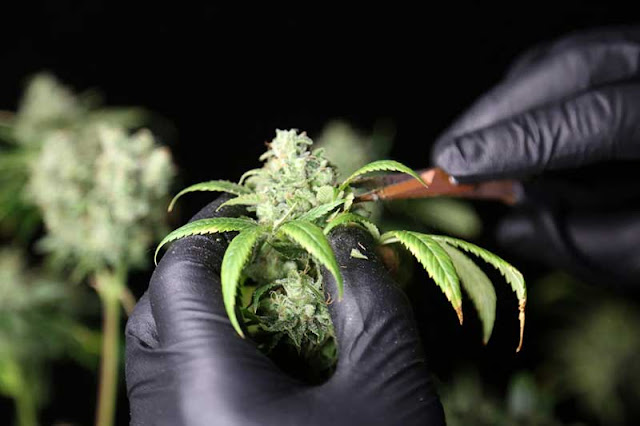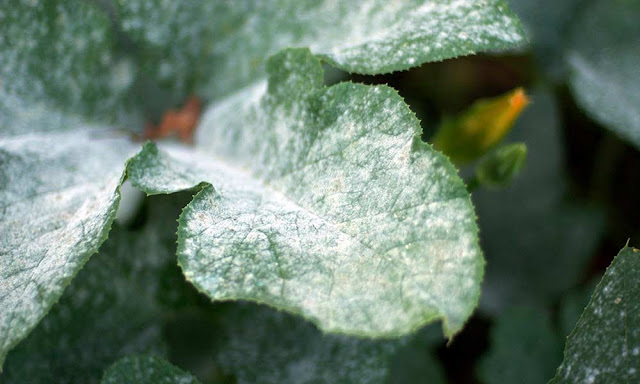Most effective tips to deal with powdery mildew on grape
If you grow grapes,you may reaching to see a white powdery substance on the grape leaves.It’s the grape powdery mildew. Especally in main grapevine growing area such as Americas,Europe and Australia.
The disease seems as a whitish-gray powdery coating on the leaves or fruit caused by plant mycelium and conidia on the surface of the plant.
The disease seems as a whitish-gray powdery coating on the leaves or fruit caused by plant mycelium and conidia on the surface of the plant.
On leaves, initial symptoms seem as chlorotic spots on the leaf surface that presently become whitish lesions.
While this can be common,it’s a disease which will injury your grape plants and your crop if left untreated.
While this can be common,it’s a disease which will injury your grape plants and your crop if left untreated.
 |
Manual management
Disease development is powerfully favored by high humidness and cloudy weather, additionally to comparatively heat temperatures.
Manual management of powdery mildew helps prevent the disease from overwintering in bark crevices and also the spread of current infections. powdery mildew infects leaves, shoots, bark and developing fruit on grapevines, releasing spores in spring throughout heat, wet conditions. Removing morbid leaves and shoots as they seem and removing dead material at the end of the season helps prevent powdery mildew spreading and overwintering on plants. Spring pruning removes additional potential sources of infection. Prune grapevines once hard frosts are over, cutting away all canes except one or two young, unfruited canes eight to ten buds long on either side of the grape trunk. Tie these to supporting wires.
Manual management of powdery mildew helps prevent the disease from overwintering in bark crevices and also the spread of current infections. powdery mildew infects leaves, shoots, bark and developing fruit on grapevines, releasing spores in spring throughout heat, wet conditions. Removing morbid leaves and shoots as they seem and removing dead material at the end of the season helps prevent powdery mildew spreading and overwintering on plants. Spring pruning removes additional potential sources of infection. Prune grapevines once hard frosts are over, cutting away all canes except one or two young, unfruited canes eight to ten buds long on either side of the grape trunk. Tie these to supporting wires.
Fungicides
Sulfur, oils, soda and biological managements are available to the house gardener for powdery mildew control. Apply sulfur before symptoms appear, using a product with additional surfactant to assist the sulfur stick to plant surfaces. you’ll also apply horticultural oils, neem oil and jojoba oil as a protectant or to eradicate existing infections. Sulfur and oils ought to never be applied together or within two weeks of each other, and neither ought to be used once temperatures exceed 90 degrees fahrenheit.
Biological powdery mildew management contains Biofungicide Trichoderma harzianum, that helps control powdery mildew infections spreading.It also have good effect on building a healthy soil condition for plant growth.
Biological powdery mildew management contains Biofungicide Trichoderma harzianum, that helps control powdery mildew infections spreading.It also have good effect on building a healthy soil condition for plant growth.
Application
Fungicide applications to manage powdery mildew ought to begin before flowering and continue while conditions for infection are favorable. Spray a protectant when flower buds are full and close to burst, wetting all plant surfaces however not saturating them, which causes the antifungal agent to drip off. Repeat the spraying every ten days if last season’s disease was severe. Intervals between spraying may be prolonged if symptoms do not appear. If mildew takes hold, continue spraying until leaf fall to help reduce next season’s infection rates. Spray with ready-to-use fungicides or dilute in step with manufacturers’ directions.
Tips
Growing grape varieties resistant to mildew and providing appropriate growing conditions will facilitate eradicate powdery mildew infections in home garden grapevines. Some grape cultivars, like Traminette, Canadice, Cayuga White, Norton, Ives, Marquis, Mars and steuben are resistant to mildew. Growing resistant varieties, well-spaced apart in open, sunny areas ought to reduce infection rates. If leaf cover is thick, expose developing grapes and improve air circulation by removing leaves at the bases of the stems.
Some interesting solution
This solution was developed specifically for zucchini by a Brazilian person. His analysis triggered an organic gardener and vintner who try the milk mixture on his vineyards. And guess what? It worked there !
It is effective and it’s non-toxic. Spraying in full sun works the best. Spray once a week but don’t spray more often than that because it will cause another kind of mold to grow on your plants.
More info of powdery mildew:http://bit.ly/powdery_mildew
Our blog site:www.doraagri.com


评论
发表评论